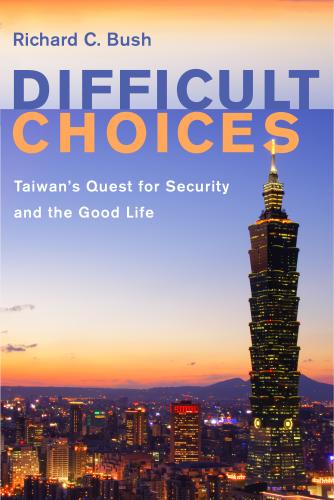Ryan Hass writes that the Biden administration largely delivered on its commitment to prioritize the Indo-Pacific region, making important progress in tightening coordination with allies and partners. President Biden would be wise to act on this once-in-a-generation opportunity to demonstrate enlightened leadership in the region. This piece originally appeared in the East Asia Forum.
“America is back,” Joe Biden proclaimed in his first address as president to a global audience. Over the year that followed, the Biden administration delivered a mixed bag in its approach to the Indo-Pacific — several bold strategic strokes, greater than expected continuity with the Trump administration on China policy, and timidity on trade policy.
The Biden administration largely delivered on its commitment to prioritize the Indo-Pacific region. With its withdrawal from Afghanistan and gradual de-emphasis on developments in the Middle East, its rebalancing of focus to the region is real.
The United States made important progress in tightening coordination with allies and partners. The elevation to the leader’s level of the Quad was significant, both symbolically and in terms of galvanizing collective action. Similarly, the AUKUS agreement was a major move to align three of the world’s most capable militaries on sustaining peace in the Pacific. Even though it generated less attention, the restoration of functional U.S.-Japan-South Korea military mechanisms was also important.
At the same time, the Biden administration got off to a slow start in its engagement in Southeast Asia. The sidelining of much of Asia in the Summit for Democracy was a setback. The administration’s lack of articulation of an Indo-Pacific strategy or an integrated China strategy was also dissonant with its declared prioritization of the region.
The administration’s top priority of 2021 was domestic renewal. Biden made progress in boosting the domestic economy, generating employment and investing in infrastructure. Early gains in controlling COVID-19 were tempered by its resurgence in the second half of the year. Biden also notched important wins by attracting leading global companies to launch significant manufacturing buildouts in the United States. The Taiwan Semiconductor Manufacturing Company and Intel are investing significantly in semiconductor fabrication plants in the United States and others will likely follow suit in 2022.
U.S. power grew more than that of any other country in the region, according to the Lowy Institute’s 2021 Asia Power Index.
Looking ahead, the United States still has unrealized gains to capture in the region. One of these is diplomatic presence. During its first year in office, the Biden administration struggled to get ambassadors in place and to coordinate senior-level visits to the region. This problem will likely resolve itself in the coming months as more ambassadors arrive in embassies and the tempo of senior-level engagement in the region ramps up.
A larger challenge for the Biden administration will be its absence of an economic agenda. They have announced plans to release an Indo-Pacific economic framework in 2022. Given that the framework reportedly will be non-binding and will not include trade or investment liberalization, it may not get a lot of uptake, particularly when the region’s focus is on realizing benefits from the Regional Comprehensive Economic Partnership and expanding the Comprehensive and Progressive Agreement for Trans-Pacific Partnership.
The Biden administration also runs the risk of having to devote energy to dealing with entangling problems outside of Asia. Currently, Russia is rattling its sabres along the border of Ukraine. If the situation escalates, it is likely to force a trans-Atlantic conversation on the role of NATO. This could lead to Europe becoming less strategically relevant in Asia and the United States needing to devote more of its strategic focus to challenges in Europe at the expense of Asia.
The United States will be forced to confront its own domestic challenges in 2022. Inflation remains stubbornly high. COVID-19 is far from contained. Congressional gridlock appears entrenched and partisan divisions will sharpen as the November 2022 midterm elections draw nearer. The country is straining to find consensus on its role in the world and, more fundamentally, whether it wants to remain an open, tolerant, democratic society. This “battle for the soul of the country’ will remain front of mind for President Biden. As the 2024 presidential election draws nearer, the president’s prioritization on preserving the democratic character of the country will likely grow stronger.
Given these circumstances, it is unlikely that the Biden administration will significantly refine its approach to China or reach for higher ambition on its trade agenda. These actions would generate political heat and Biden may not feel he has margin to accept the costs of such policy shifts.
Rather than relitigate politically-charged elements of his Asia policy agenda, Biden would be wise to act on this once-in-a-generation opportunity to demonstrate enlightened leadership in the region. Most countries are struggling to get COVID-19 under control and their economies back on their feet. This is what will matter most over the next year.
Nothing would have a more powerful impact than if the United States set a laser-like prioritization on meeting the region’s testing, vaccine, and medical needs, and meaningfully leading efforts to support Asia’s economic recovery. If the Biden team gets this right, its other shortcomings will be overlooked. If it misses this moment, expect to hear more laments in the future about the United States being absent on the issues that matter most.
The Brookings Institution is committed to quality, independence, and impact.
We are supported by a diverse array of funders. In line with our values and policies, each Brookings publication represents the sole views of its author(s).









Commentary
How the United States can strengthen its position in the Indo-Pacific
February 2, 2022